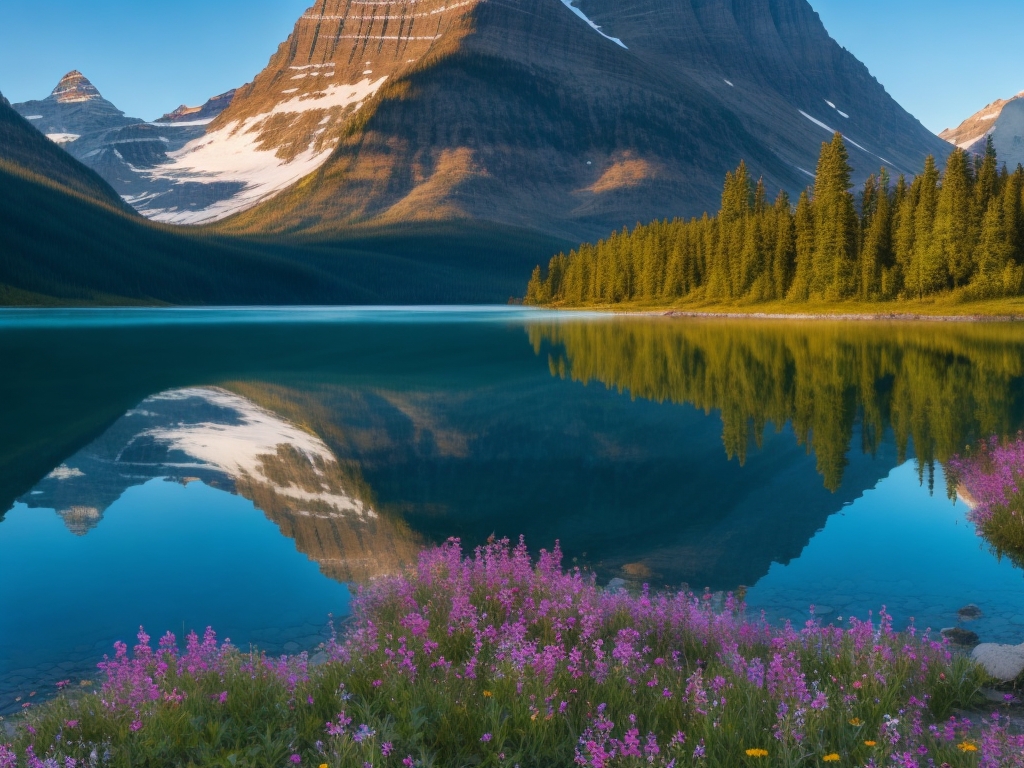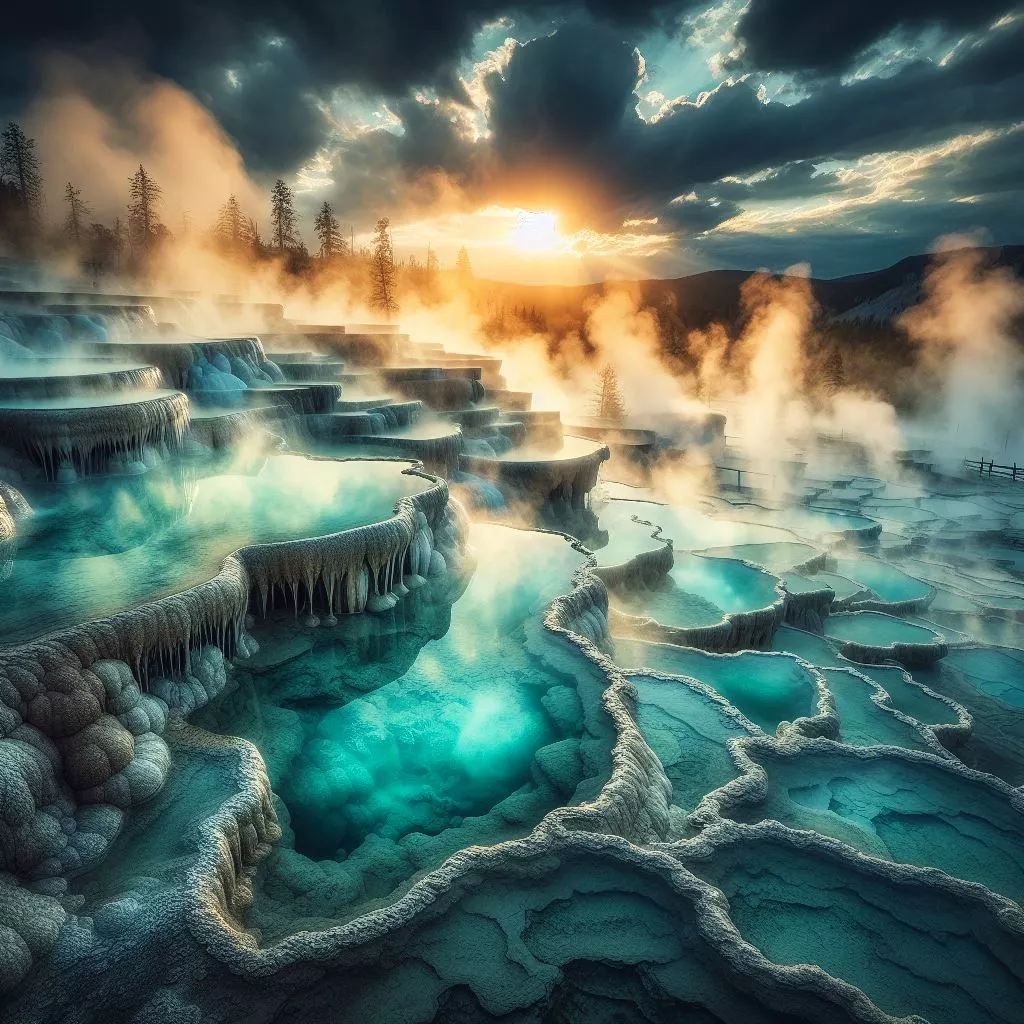Introduction
Lassen Volcanic National Park is one of the most fascinating and geologically active parks in the United States. Located in northeastern California, it was established in 1916 to preserve the area surrounding Lassen Peak, the southernmost volcano in the Cascade Range. The park has a dramatic landscape shaped by volcanic activity, hydrothermal features, and glaciers, offering visitors a chance to witness the powerful forces that continue to shape the Earth. From bubbling mud pots to steaming fumaroles, this park will make you erupt with excitement! Here are 5 incredible fun facts about Lassen Volcanic National Park.
History and Formation
Native American Legends
Lassen Peak is rich with legends and stories from Native American tribes like the Atsugewi, Yana, and Maidu who inhabited the area for centuries. They shared oral histories about the eruptive peak being home to the powerful sky spirit Kah-kah-teh-pee-nah. The Atsugewi people called Lassen Peak “Tukup” which means “burning mountain.” These names honored the volcano’s fiery wrath.
Origins and Geology
Lassen Volcanic National Park sits within the southernmost section of the Cascade Mountain Range. Over 27,000 years ago, Mount Tehama rose as an immense volcano. After centuries of volcanic activity, it completely collapsed, leaving behind a caldera that later filled with lava to form Lassen Peak about 25,000 years ago. The park contains a fascinating diversity of volcanic features like lava flows, cratered peaks, and bubbling mudpots.
Major Eruptions and Events
Eruption of 1914-1917
After 10,000 years of dormancy, Lassen Peak rumbled back to life between 1914-1917. There were over 180 explosions documented, unleashing ash columns, lava flows, and destructive mudslides called lahars. This significant eruption at Lassen was the most explosive in the Cascades during the 20th century.
Eruption of 1915
The most dramatic event came on May 19, 1915 when a powerful blast spewed a column of volcanic ash and rock over 5 miles into the sky. The eruption triggered a lahar that rampaged down the north flank of Lassen Peak at speeds up to 60 mph, destroying vegetation for over 15 miles.
Devastation and Rebirth
The eruptions wiped out fertile habitats and hydrothermal features. However, life persevered. Gradually, plants like lodgepole pines recolonized the devastated landscape. Trees flattened by the 1915 lahar can still be seen today, providing an eerie reminder of the volcano’s awesome power.
Unique Geologic Features
Hydrothermal Areas
Evidence of Lassen’s active geothermal system is visible via bubbling mudpots, steaming fumaroles, and boiling pools. Hydrothermal areas like Bumpass Hell and Sulphur Works hiss and burble as hot gases rise through vents from the heated rock below the surface. These areas offer visitors a safe yet exhilarating look at Lassen’s powerful forces at work.
Lava Flows
Black basaltic lava flows wind through sections of the park, frozen in time from eruptions centuries ago. The most extensive is the Chaos Crags lava flow which extends for over 3 miles. Its jagged aa lava has a rubbly, clinkery surface that resembles chaotic jumbles of rock.
Cinder Cone Volcanoes
Lassen has the world’s largest group of cinder cone volcanoes inside a national park. Formed from solidified lava fragments, these symmetrical cones offer a scenic hike to see their bowl-shaped craters up close. The most iconic is Cinder Cone which erupted fantastically in 1666.
Recreation and Activities
Hiking and Camping
Over 150 miles of hiking trails provide access to volcanic wonders like mudpots, lava flows, and cinder cones. Backcountry camping is also available for multi-day excursions deep into Lassen’s volcanic terrain. Popular hikes include Bumpass Hell Loop, Cinder Cone Trail, and the Lassen Peak Trail.
Swimming and Boating
The cooler climate of Lassen makes for refreshing swims in crystal clear lakes. Favorites like Manzanita Lake, Juniper Lake, and Butte Lake offer swimming and water activities like kayaking, paddle boarding, and fishing for trout.
Winter Sports
Once the snow starts falling, Lassen transforms into a winter wonderland. Cross-country skiing and snowshoeing are prime ways to explore the snowy landscapes. You can even ski and snowboard at the Lassen Park Ski Area, which receives over 30 feet of snow annually!
Conclusion
With its fascinating volcanic features, stunning alpine scenery, and wealth of recreational opportunities, Lassen Volcanic National Park is an adventurer’s paradise. Its geothermal wonders showcase the mighty forces still simmering beneath the Earth’s surface. Lassen’s history of fiery eruptions shows both nature’s destructive power and enduring capacity for rebirth after devastation. Whether you’re hiking, camping, swimming, or skiing, Lassen’s dramatic volcanic landscape is sure to make your inner explorer erupt with excitement!
Frequently Asked Questions
Below are some common questions about Lassen Volcanic National Park to help you learn more about this incredible place. With detailed answers to these FAQs, you’ll get valuable insights for planning your own adventure in Lassen’s volcanic wonderland.
When was Lassen Volcanic National Park established?
Lassen Volcanic National Park was established in 1916, just a year after Lassen Peak’s most dramatic eruption. The park was created primarily to protect the devastated area surrounding Lassen Peak and preserve the volcanic features in the region.
What Native American tribes lived near Lassen Peak?
Three main Native American groups inhabited the area around Lassen Peak for centuries: the Atsugewi, the Yana, and the Maidu. They all shared legends about Lassen Peak being home to powerful volcanic spirits.
How tall is Lassen Peak?
Lassen Peak stands at 10,457 feet tall, making it the southernmost volcano in the Cascade Mountain Range. It is the dominant landmark in the park.
When did Lassen Peak last erupt?
After remaining dormant for about 10,000 years, Lassen Peak rumbled back to life between 1914-1917, unleashing steam explosions, lava flows, and mudslides. The most violent eruption occurred on May 19, 1915.
What is unique about the hydrothermal areas?
Due to Lassen’s active geothermal system, the park contains fascinating hydrothermal areas like Bumpass Hell and Sulphur Works. Here you can safely view volcanic features like boiling mud pots, steaming fumaroles, and hot springs.
How many volcanoes are in the park?
Lassen Volcanic National Park contains the world’s largest group of cinder cone volcanoes inside a national park. There are over 30 cinder cone volcanoes formed from solidified lava fragments.
What winter activities can you enjoy in Lassen?
Once the snow starts falling, popular winter activities include cross-country skiing, snowshoeing, and even downhill skiing and snowboarding at the Lassen Park Ski Area. The ample snowfall creates a true winter wonderland.
Where can you go swimming in Lassen?
Cool, crystal clear lakes provide the perfect spots for swimming and water activities during Lassen’s warmer months. Top picks are Manzanita Lake, Juniper Lake, and Butte Lake which allow swimming, kayaking, and fishing.
Continue Your Lassen Volcanic Adventure
Hopefully this FAQ gave you some helpful info about Lassen Volcanic National Park! For an even deeper dive into this incredible place, check out the park’s official website and the Go Lassen blog. Happy adventuring!




